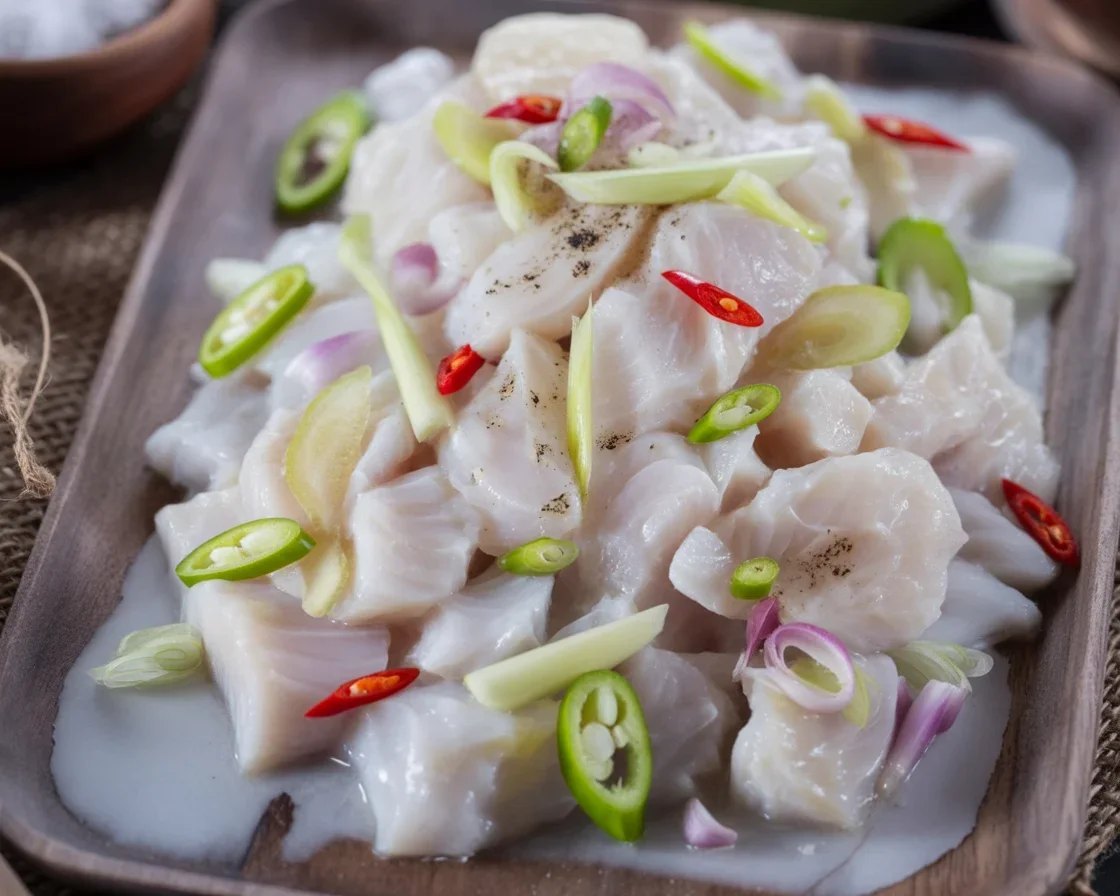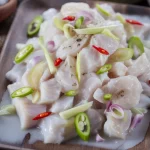Filipino kinilaw na isda is always the answer in my head when it’s blazing hot and cooking something on the stove just sounds like a bad idea. That feeling when you want a five-star dish but don’t even want to turn on the burner? Yup, this is it. Honestly, sometimes grilled food like this Filipino Grilled Pork BBQ calls my name too, but when it’s kinilaw time, even BBQ takes a back seat. And trust me, if you think ceviche is cool, wait till you taste the zesty magic of kinilaw after you paired it with a super simple garlic sinangag (filipino garlic fried rice). So, let’s dive in before I start drooling on my keyboard. 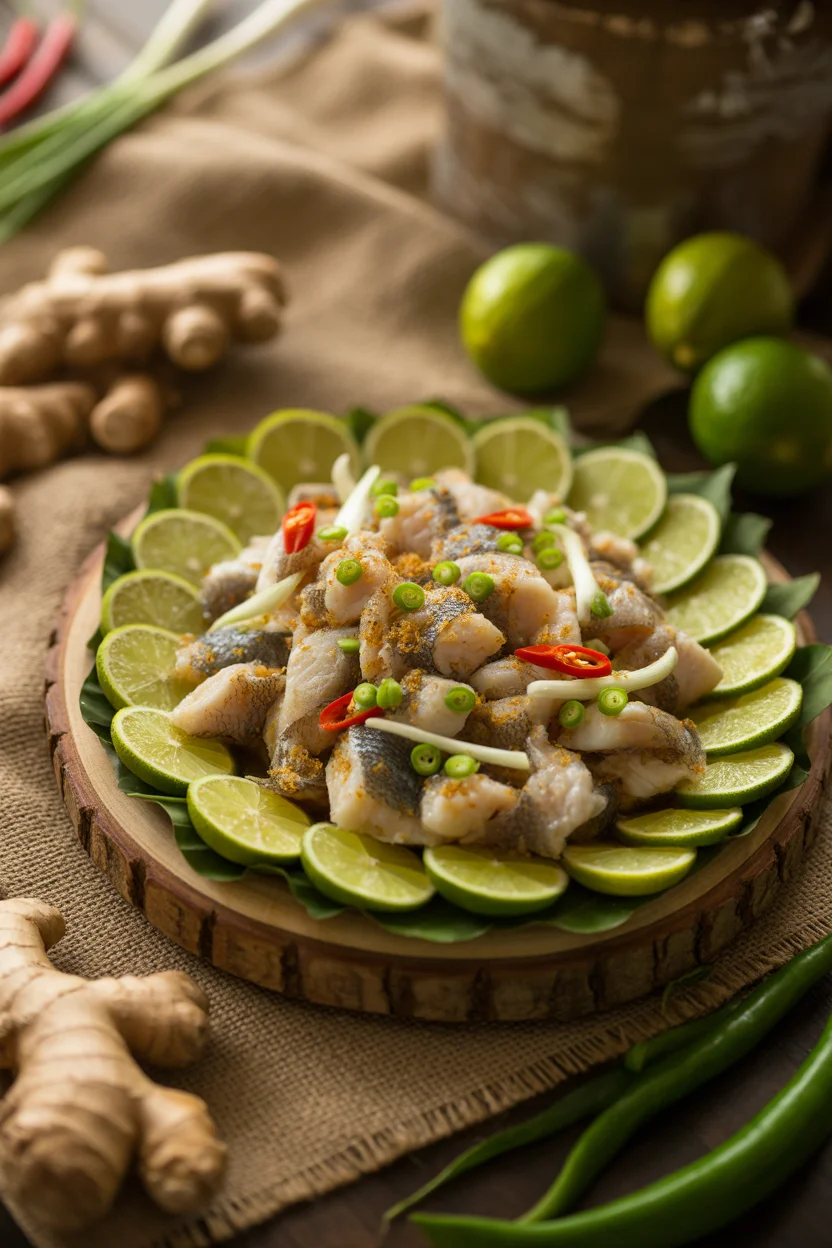
What is kinilaw?
Not gonna lie, kinilaw gets compared to ceviche all the dang time. They really aren’t twins, though—more like distant cousins. Basically, kinilaw na isda is a Filipino-style fish ceviche that’s marinated in vinegar (and sometimes citrus), chopped up with onions, ginger, chilies—oh, and a wild kick of coconut milk if I’m in a good mood. The acid “cooks” the fish. Sounds weird? Nah. It totally works.
What’s wild is that this dish stretches way, way back. Some folks say locals were making kinilaw before there were even frying pans or oil in Filipino kitchens. I swear, this recipe is older than my Tito’s old-school jokes. It’s perfect for picky eaters—you can adjust the tang, spicy level, whatever you want.
People eat this as a pulutan (bar snack!) or just for lunch with steamed rice, hanging out under the mango tree. Not fancy, just delightfully fresh and in-your-face with flavor.
“Every time I serve kinilaw na isda at parties, even people who say ‘I don’t eat raw fish’ are scraping the bowl clean. No joke—it disappears so fast.” – Gem, Davao City
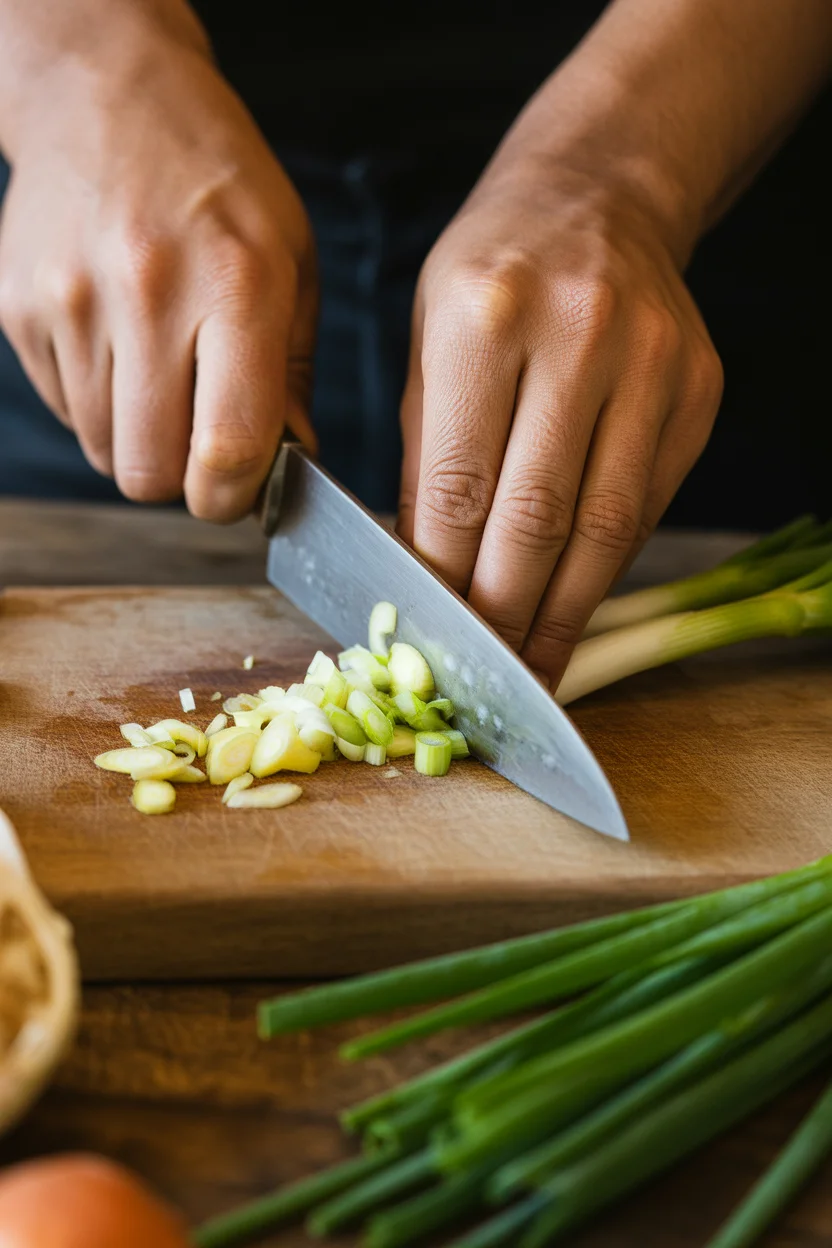
Choosing fresh fish
Now, listen to me—don’t mess around with old fish here. Seriously, the whole spirit of kinilaw na isda is in the freshness. I go for fish like tanigue or yellowfin tuna if I can get it. Snapper’s great, too. Avoid anything frozen if you can.
Best tip? Smell the fish. It should smell like… nothing. Or maybe like the sea. Not like last week’s leftovers, please.
If you trust your fishmonger (I bug mine with a million questions), ask for sushi grade when possible. Because, well, we want happy stomachs. Cut away any dark or stringy bits. Dice the fish kinda chunky—it shouldn’t look like mush.
Freshness honestly makes or breaks this whole experience. Get good fish and everyone will think you’re some kitchen genius.

Preparing marinade
Alright, time to get a little wild with flavors. The base is super simple: vinegar—it’s non-negotiable. Coconut vinegar if you want that classic Filipino kinilaw na isda flavor, but cane vinegar works in a pinch too.
Smash up some ginger. More if you love heat. Onion (red onion wins for color and crunch). A bit of chili, feel free to go wimpy if you can’t handle spicy, I don’t judge.
Sometimes I throw in calamansi or lime. Not necessary, but wow it brightens that fish. Other days, a spoon of coconut milk at the end changes the whole mood. Oh, salt it up. Not too shy there.
Let the fish bathe in that combo for maybe 10-15 minutes? Just no over-marinating—leaves you with fishy erasers instead of juicy bites. Learn from my mistakes!
Mixing ingredients
I get a little excited at this part. Basically, dump the diced fish into a bowl. Top it with all your chopped onions, ginger, and chilies. Splash that vinegar marinade all over.
Stir with a light hand—no need to smush it up. You want those flavors to hug the fish, not maul it. Quick tip: taste the marinade before mixing, just in case you went vinegar-crazy.
If it’s your jam, toss in a splash of coconut milk last. Some swear by giving the mixture a chill in the fridge so it’s extra cold.
After a short soak, you want each bite looking glossy and glistening. Even if it seems simple, for some reason kinilaw na isda always lands like a party trick.
Balancing flavors
Now, here’s the kind of thing that’ll make you feel like a boss. Kinilaw na isda isn’t meant to burn your mouth, but you want a punchy mix of sour, spicy, maybe sweet, a little salty.
I always, always taste and tweak right before serving. If it makes your eyes widen a bit, you nailed it! Too sharp? Pair it with rice or toss in a bit of sugar (gasp! but trust me). Not enough punch? Add more chili or a spritz of citrus. Salt brings out the flavors, but don’t drown the fish.
I find people have opinions (oh boy… do they ever) about what goes in. So, listen to yours. That’s what makes this dish like culinary magic—totally customizable, always full of bright and bold flavors.
Serving suggestions
Here’s the best way to blow minds when serving kinilaw na isda:
- Plate it cold in a shallow dish—a cold plate keeps the fish fresh longer
- Sprinkle extra fresh chilies and sliced onions on top for dramatic flair. Instagram will love it!
- Seriously, serve with hot steamed rice or even spicy Filipino Tinola on the side
You can eat it as a pulutan (yeah, drinks make everything more fun), or just scoop it up with rice for lunch. Don’t even bother getting fancy with forks—spoon and bowl is all you need.
Safety tips
Okay, real talk—raw fish equals being extra careful. First off: clean your knife and chopping board. Soap and water, don’t skip it.
If the fish is even a little questionable, don’t risk it. Only goes well with super-fresh fish. Also, if you’ve got leftovers (kind of rare), eat them fast. Next-day kinilaw? Not so much.
For younger kids or anyone with a weird seafood allergy, maybe give them cooked chicken or tofu and just enjoy watching them stare at your plate. I never serve kinilaw na isda to guests who have fish doubts—just makes the party weird.
“Tasted kinilaw for the first time on a beach trip and wow, fresh fish really does make a world of difference. I’d never trust supermarket stuff—but straight from the fisherfolk, I’m all in.” – Marco, Cebu
Common Questions
Q: Can I use any type of vinegar?
A: Pretty much, but coconut or cane vinegar does best. White vinegar is too strong and a bit harsh.
Q: What other fish can I use for kinilaw na isda?
A: Tuna, tanigue, and snapper are classics. Honestly, whatever’s fresh (and firm!) at your market.
Q: How long should I marinate the fish?
A: About 10-15 minutes tops. You want it opaque but still juicy.
Q: Can kinilaw na isda be made ahead?
A: It’s really best when fresh. Letting it sit too long makes it rubbery. I prep the ingredients in advance and mix at the last minute.
Q: Is it really safe to eat “raw” fish?
A: Yes—if it’s fresh and prepped with clean tools. If you’re nervous, stick to sushi-grade fish.
Give Kinilaw a Shot—You’ll Thank Me Later
Honestly, kinilaw na isda is proof that Filipino food can be bold, fresh, and a little rebellious. With super-fresh fish and a good vinegar splash, you’re halfway to a snack that punches above its weight. Go wild and team it up with recipes from home, or just enjoy it as is—like I do most weekends.
If you’re curious about what makes the dish special, I recommend checking out a few spots like Kinilaw Na Isda (Fish with Vinegar and Ginger) – Filipino Chow or reading a deep dive on the Kinilaw – Wikipedia page for the history. Curious if it’s the same as ceviche? Read what folks on Foxy Folksy think about kinilaw as Filipino ceviche. Trust me, once you taste it, there’s no going back!
Let me know how your kinilaw na isda turns out and don’t forget to try it with fried rice or Filipino BBQ for the full “Fiesta in your mouth” feeling. Happy mixing and eating! 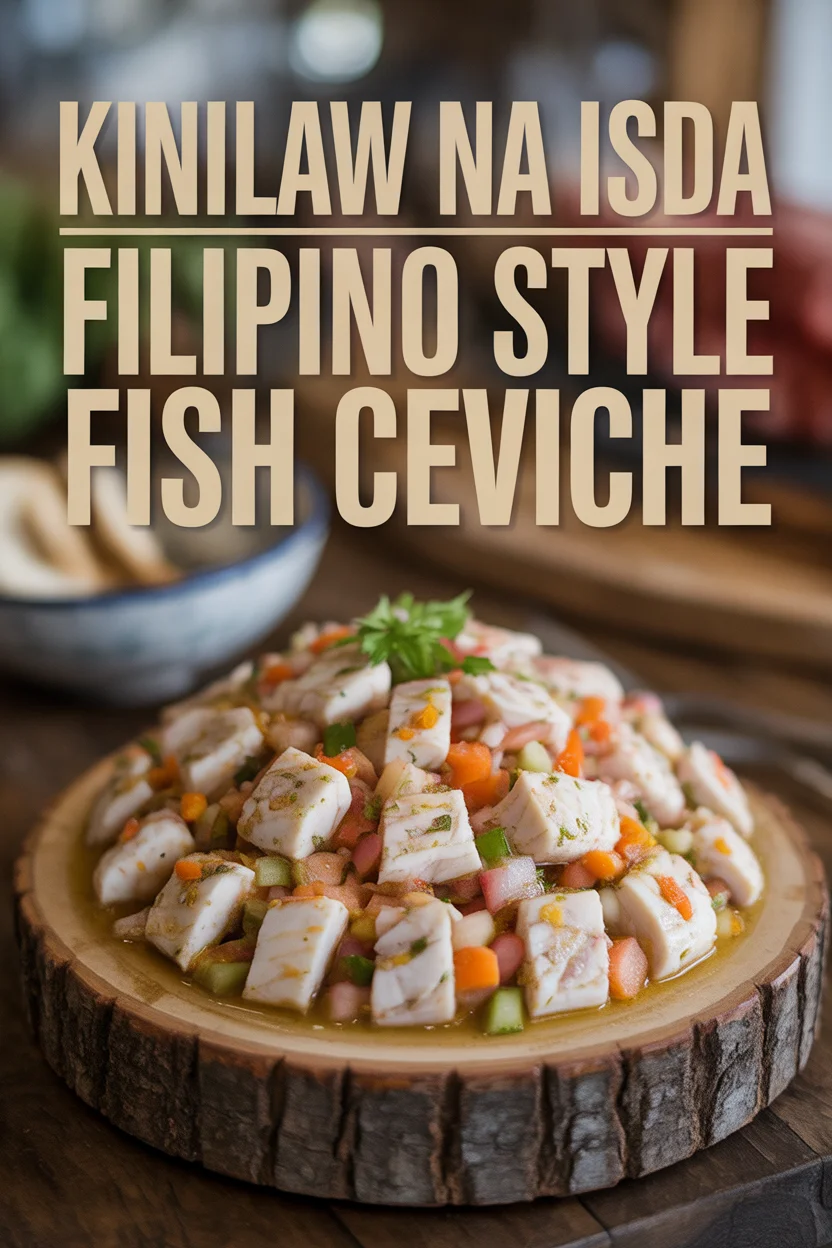
Kinilaw na Isda
Ingredients
For the Marinade
- 1 cup vinegar (coconut or cane) Coconut vinegar is preferred for traditional flavor.
- 1 tablespoon ginger, smashed Add more for a spicier flavor.
- 1 small onion, chopped Red onion works best for color and crunch.
- 1 small chili, chopped Adjust spice level to taste.
- 1 tablespoon coconut milk Optional, adds creaminess.
- to taste pinch salt Enhances overall flavor.
For the Fish
- 1 pound fresh fish (tanigue or yellowfin tuna) Ensure fish is fresh and sushi grade.
Instructions
Preparation
- Choose fresh fish, ideally tanigue or yellowfin tuna. Avoid frozen fish.
- Smell the fish to ensure it smells fresh like the sea.
- Dice the fish into chunky pieces.
Marinating
- In a bowl, mix vinegar, smashed ginger, chopped onion, chili, and salt.
- Add the diced fish to the marinade, ensuring it is fully coated.
- Let the fish marinate for 10-15 minutes, being careful not to over-marinate.
Mixing Ingredients
- Gently stir the fish with the marinade, ensuring not to mash the fish.
- Optional: add coconut milk before serving for added richness.
- Taste the marinade and adjust as necessary.
Serving
- Serve kinilaw na isda cold on a shallow dish with fresh chilies and sliced onions as garnish.
- Pair it with hot steamed rice for a delightful meal.
